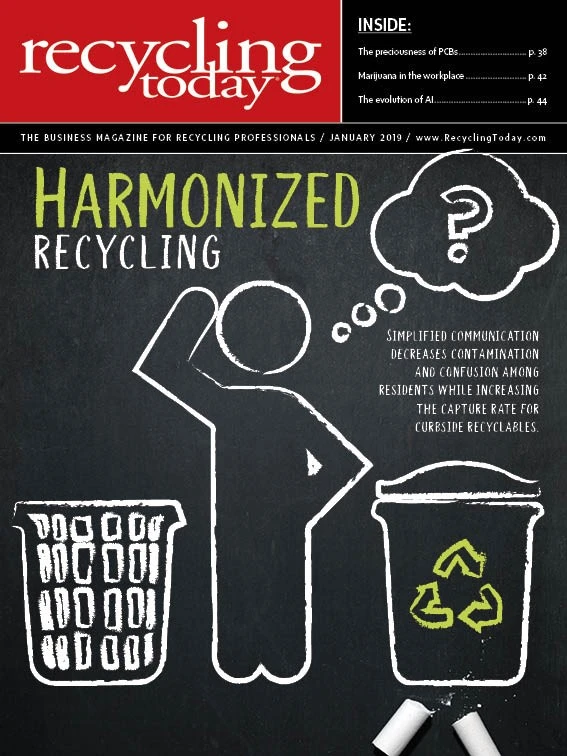
The trade war between the U.S. and China and the tariffs that were enacted as a result injected a great deal of uncertainty into the recycling industry in 2018. That uncertainty was further compounded by changing scrap import procedures and policies in China that affected the global flow of scrap. For U.S. recyclers, new domestic and overseas markets had to be sought, which sometimes meant careening along steep learning curves.
But U.S. recyclers are learning to adapt to what has become their new reality. This process of adaptation is not new to the recycling sector; it is just the most recent chapter in the ongoing story of the industry’s resiliency.
The Institute of Scrap Recycling Industries (ISRI), Washington, has helped to illustrate that resiliency over the years in its annual “Recycling Industry Yearbook.” This annual publication is designed to provide the most up-to-date information and statistics about the U.S. recycling industry and global scrap marketplace.
“This process of adaptation is not new to the recycling sector; it is just the most recent chapter in the ongoing story of the industry’s resiliency.”
“With a greater spotlight on the industry in the wake of rising trade protectionism around the globe, the publication provides the most comprehensive analysis of where the industry stands based on the most current data compared to previous years,” ISRI states in a news release announcing the most recent edition of the “Recycling Industry Yearbook.” The 2018 edition of the yearbook provides figures for 2017, before the U.S. introduced Section 232 tariffs on imports of steel and aluminum into the U.S. and Section 301 tariffs on Chinese goods, prompting China to introduce retaliatory tariffs, and before China began banning imports of certain scrap materials.
In that news release, ISRI Chief Economist Joe Pickard says, “The scrap marketplace has become increasingly global in recent decades, and the United States is the largest exporter of recycled commodities in the world. China’s rapid economic expansion was the most important driver of the swift expansion of the global scrap market, but market conditions in China are changing today given China’s rising domestic supply of scrap, investment in scrap processing and import restrictions. But as we show in the 2018 yearbook, scrap recyclers remain extremely responsive to changing market conditions and are focused on producing consistently high-quality scrap commodities to meet consumer demands at home and abroad.”
According to the yearbook, preliminary data show exports of all scrap commodities from around the world were valued at approximately $105 billion in 2017. Since 2000, net exports of U.S. scrap have made a positive contribution to the U.S. trade balance, amounting to more than $235 billion. Major export destinations for U.S. scrap in 2017 included China ($5.6 billion), Canada ($2.1 billion), Mexico ($1.1 billion), Turkey ($1 billion), India ($923 million), Germany ($910 million) and South Korea ($778 million).
It will be interesting to see how these figures change in 2018 based on China’s scrap import policies and U.S. recyclers’ ability to adapt to changing market conditions.

Explore the January 2019 Issue
Check out more from this issue and find your next story to read.
Latest from Recycling Today
- ReMA opposes European efforts seeking export restrictions for recyclables
- Fresh Perspective: Raj Bagaria
- Saica announces plans for second US site
- Update: Novelis produces first aluminum coil made fully from recycled end-of-life automotive scrap
- Aimplas doubles online course offerings
- Radius to be acquired by Toyota subsidiary
- Algoma EAF to start in April
- Erema sees strong demand for high-volume PET systems






